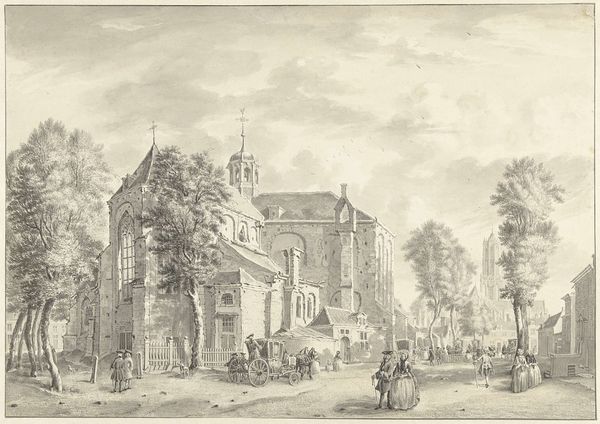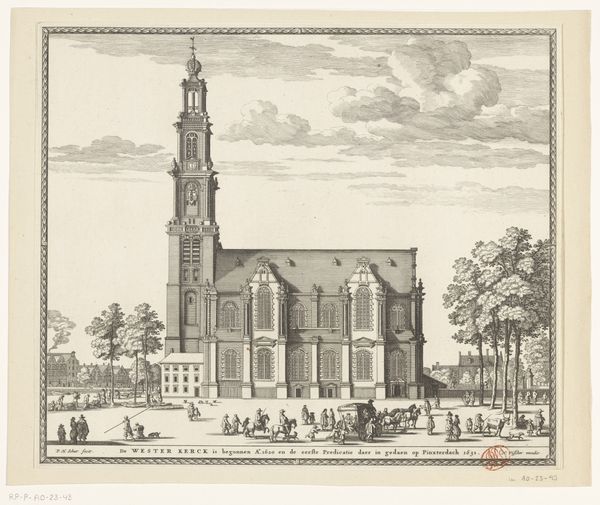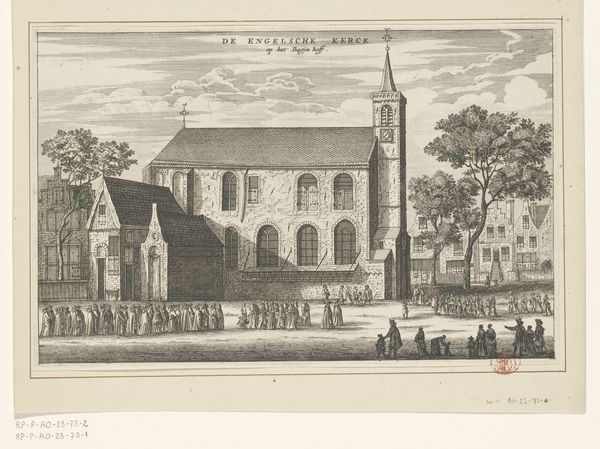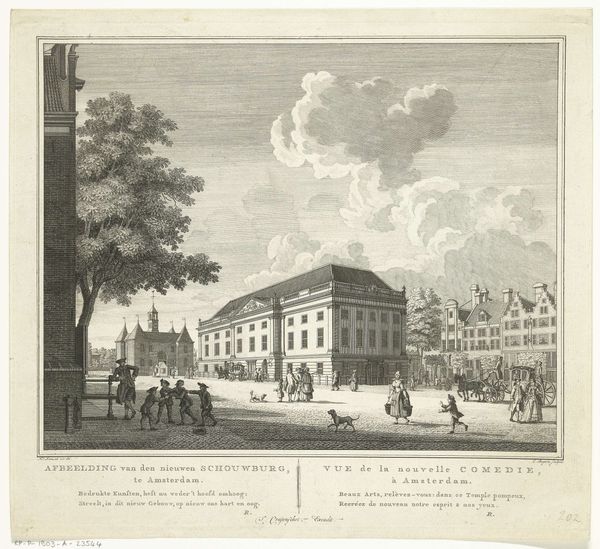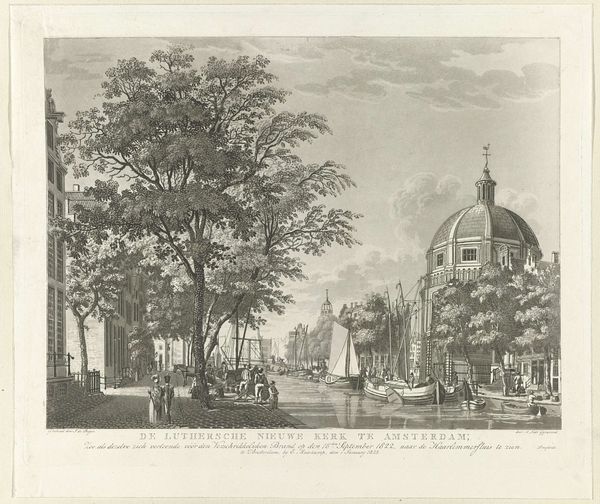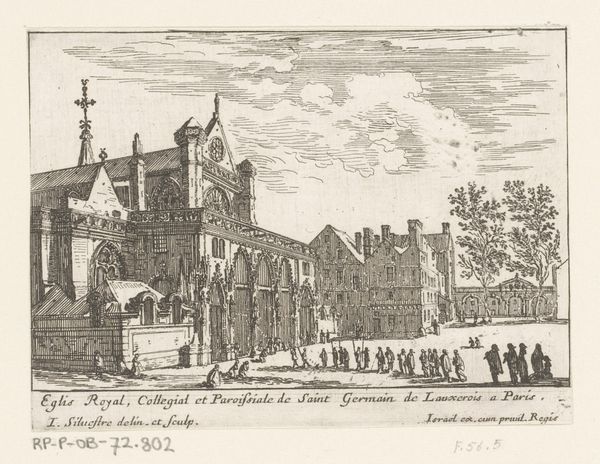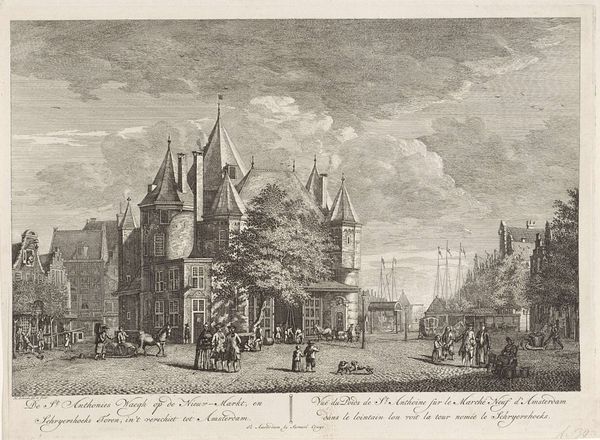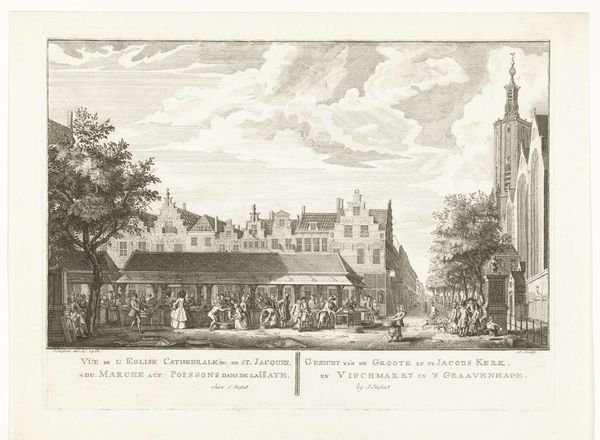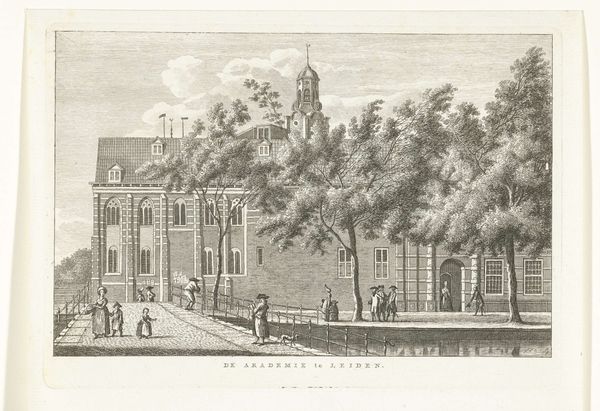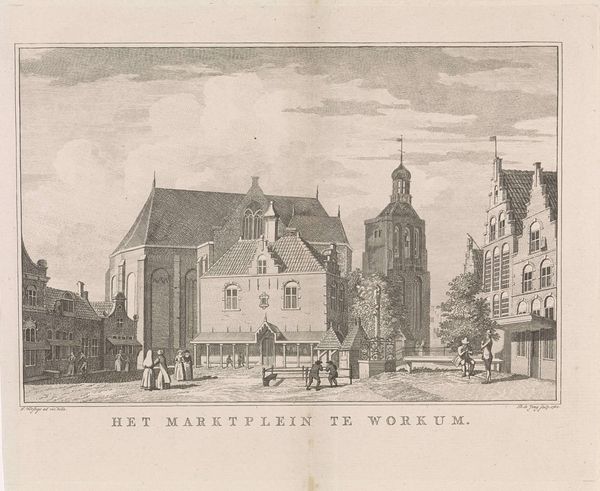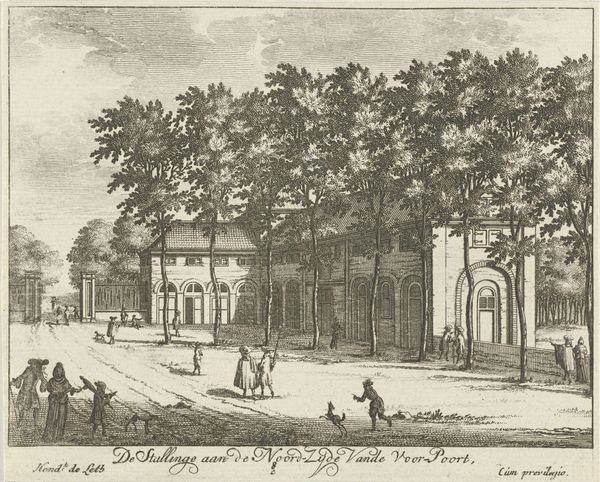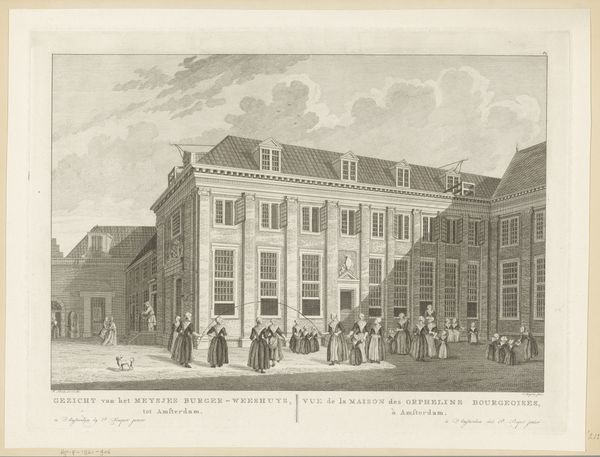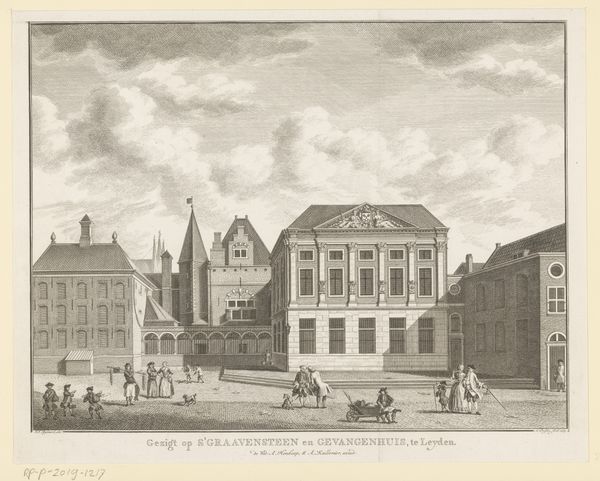
Gezicht op de Noordermarkt en Noorderkerk te Amsterdam c. 1770 - 1783
0:00
0:00
hermanuspetrusschouten
Rijksmuseum
print, engraving, architecture
# print
#
landscape
#
cityscape
#
engraving
#
architecture
Dimensions: height 270 mm, width 360 mm
Copyright: Rijks Museum: Open Domain
Editor: This is Hermanus Petrus Schouten's engraving, "Gezicht op de Noordermarkt en Noorderkerk te Amsterdam," made around 1770 to 1783. I'm struck by how orderly and almost picturesque the scene is – especially given it's depicting a marketplace. What do you see in this piece? Curator: I see a carefully constructed social landscape, one that invites us to consider power dynamics embedded within urban spaces. Look how the imposing architecture of the Noorderkerk looms over the relatively bustling marketplace. Who do you think the print was created for, and what does that suggest? Editor: I imagine it was for the rising merchant class, to document and almost celebrate the growth of Amsterdam? Curator: Precisely. Consider, too, how the composition subtly reinforces a social hierarchy. The church, representing religious authority, anchors the composition, while the market activity is framed beneath it. Who has access to religious power vs. financial resources here? It also points to issues of accessibility to both physical space and the resources that each institution might hold. Do you see an even representation of genders present? Editor: I see more men around the market stalls and perhaps more women around the outskirts. The tree also provides a separation within the frame itself... so many symbolic layers to peel away! Curator: Exactly. Think of how landscape prints like this were circulated and consumed, shaping perceptions of Amsterdam as a prosperous, orderly city, perhaps masking social inequalities. We should be asking, who does this vision of order benefit and who does it exclude? Editor: It's incredible how a seemingly simple city view can reveal such complex social and political undercurrents! I'll never look at landscapes the same way again. Curator: I agree. This piece urges us to critically examine the intersectional narratives within the built environment, especially as captured and mediated through art.
Comments
No comments
Be the first to comment and join the conversation on the ultimate creative platform.
